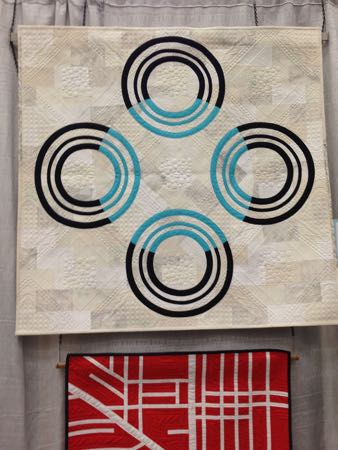If you’re even a beginning quilter, you probably know that double-fold quilt binding is a staple of the craft. Made from strips of fabric cut on the bias, sewn together end-to-end and folded lengthwise, bias tape is often used for binding quilts and blankets. Whether you buy it from a craft store or make your own, you’ll soon find that you can never have enough double-fold quilt binding (or double-fold bias tape) to finish or incorporate into your projects.
Wondering how to make double-fold quilt binding? Want to learn how to tell it apart from other popular types of bias tape?
Here are some great tips to make your quilt bindings a breeze!

Photos via Right Sides Together
What is double-fold quilt binding?
Double-fold quilt binding differs from other types of bindings (single fold and French) only in how it’s folded. Both of the long raw edges are folded once toward the center — making single fold bias tape — and then folded together again, with the crease in the center of the tape. This provides an extra layer of stability for binding and protecting quilt edges, but the fold lines also give a clear path of stitching. Double-fold and French bias tape are mostly used to visibly enclose a raw edge (as in a quilt binding), where single-fold tape is often used in garment sewing to turn a hem to the inside and finish it in one step.

Single-fold, double-fold and French quilt bindings.
Making and sewing your binding
One of the benefits of making your own double-fold quilt binding is that you can match it directly to your fabric and your project. You can either make your binding from a single piece of fabric or you can piece together a scrappy length of tape from different fabrics you have in your stash.
Double-fold quilt binding can be assembled in one of two ways: cutting the strips before you piece them end-to-end, or use the technique of continuous bias tape to minimize sewing and eliminate fabric waste. Once you’ve pieced together your strips, you can either fold the tape manually (which may not be entirely accurate) or you can use a metal bias tape maker, which folds the edges perfectly into a single fold so that it can be pressed, folded in half, and pressed again.

Because double-fold quilt binding has no visible raw edges when closed, it’s great for attaching with your sewing machine. Simply enclose your raw edge and stitch all the way around, making sure to miter your corners. You can also sew one side of the binding to the front of the quilt, right sides together, wrap it around the raw edge, and hand stitch the other side to the back of the quilt.

“Moving Target” by Christine Perrigo
Beyond the boundaries
Once you’ve made your binding, you can definitely use it for its intended purpose, but don’t feel limited to just that! Bias tape can be used as a decorative element appliquéd directly onto your quilt. In fact, the quilt show at QuiltCon 2015 featured an entire category of bias tape quilts! The entries were fabulous, and so many quilters came up with fabulous ways to include bias tape in their designs.
Do you have any ideas or tips for using double-fold quilt binding?
New Online Quilting Class
Confidently complete any project with beautiful binding and perfect piping — it’s easier than you think.Enroll Now »


Share tips, start a discussion or ask one of our experts or other students a question.
No Responses to “A Little Bit "Biased": Tips for Double-Fold Quilt Binding”